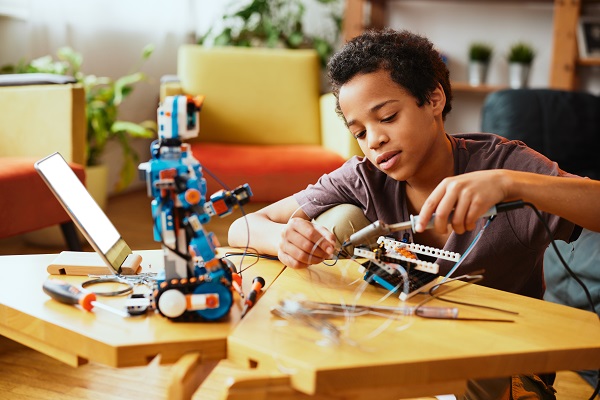The impact of social robots on children’s development: What science says

However, developers of AI systems for children often design individual screen-based activities, while ignoring a substantial element of children’s development: their interaction with a social environment.
Social learning environments work best for children. For example, children that learn a language or solve a problem together show higher learning retention and at the same time, they develop multiple other skills such as empathy, theory of mind, metacognition and emotion regulation.
But how can intelligent learning systems become more social? Scientific evidence shows that social robots have the potential to be a promising tool for teachers to support their pupils’ development, as this form of embodied and social AI can be embedded in children’s social environments.
Scientific evidence on robots and children
Researching the impact of embodied and social AI systems that can propose design principles to support children is one of the goals of the Human Behaviour and Machine Intelligence (HUMAINT) team at the Joint Research Centre (JRC), European Commission. Research in the field of child-robot interaction demonstrates at least two consistent results:
- Robots are impactful for children: A recent review shows that robots can be effective in increasing cognitive and affective outcomes. For example, studies carried out by the JRC team in a school setting showed that the intervention of a robot affected children’s problem-solving processes as well as the type of social interaction between two children.
- Autistic children can benefit from their interaction with robots:Research on robots and autistic children shows great potential in the use of robots. Studies show that the predictable behaviour of robots is one of the key elements that facilitate the interaction of autistic children with robots – a fact that has been repeatedly acknowledged by educators.
Ethical considerations
We conducted a participatory design study with children, researchers and policymakers, and with our JRC Science for Policy report, we propose an approach to AI that adheres to children’s fundamental rights. In addition, we joined forces with UNICEF Office of Global Insight and Policy and the Honda Research Institute, Japan, to pilot the first Policy Guidelines on Artificial Intelligence and Children’s Rights. Inclusion and non-discrimination are fundamental characteristics for the development of fair robots for children. As such, we conducted a participatory action research study with children from a rural area in Uganda and from an urban area in Tokyo, Japan with the aim of understanding their perspectives regarding robot designs for children. Based on the findings of those studies, we are currently working towards the development of transparent and explainable robots for children.
Conclusion
Social robots as a form of embodied and social AI are a powerful tool that teachers can use to complement the design of multimodal and multisensory dynamic learning environments. As mentioned in our report led by the LEGO Foundation, children’s participation is crucial in every stage of developing an AI system for children. However, for robust robotic systems, technical developments are still needed. This means that now is the time for the educational community to intervene in order to provide insights for the design and development of social robots that would serve the best interests of all children.
Author: Vicky Charisi, Joint Research Centre, European Commission
